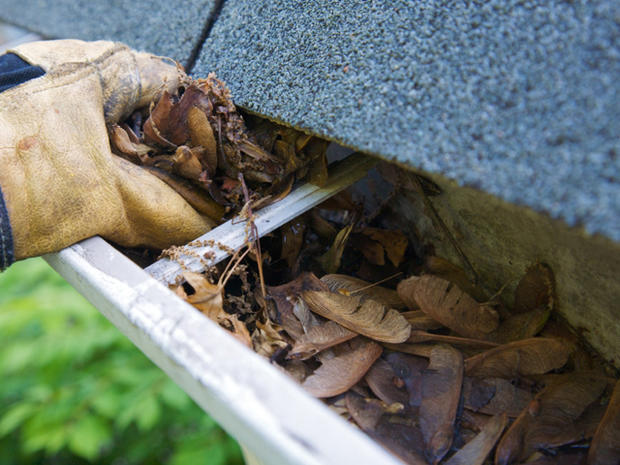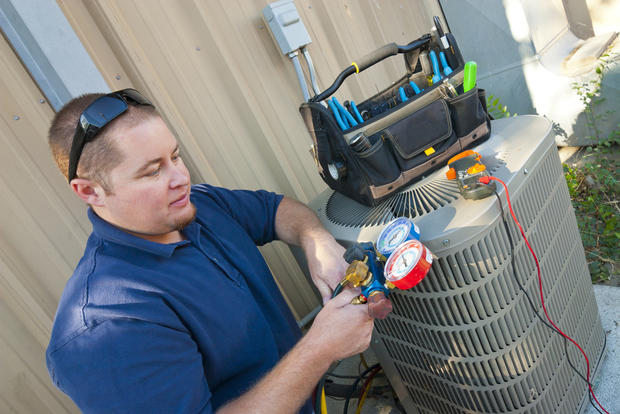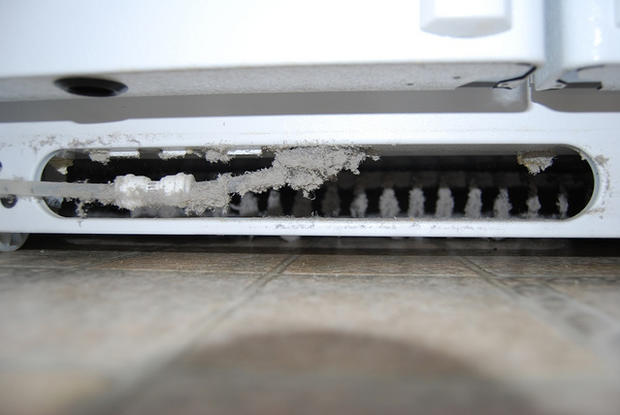6 money-saving home projects for spring
It took a while, but spring appears to finally be here.
For most of us, that means emerging from our dark indoor cocoon and spending some time outdoors, playing in the sun, going for walks and starting our gardens.
But for homeowners, it also means a few extra chores to ensure that their homes are still in good working condition. Checking your home every spring and fall keeps you on top of its maintenance, meaning few big issues get missed and spiral out of control. With winter's potentially damaging temperatures and snowfall behind us and summer's hot days ahead, here are some important maintenance projects to undertake while you do your spring cleaning.
Clear the gutters
If you have any foliage built up in your gutters, the leaves and debris will block water from draining properly. That could allow excess water to pour over, down your siding and into the ground around the house. That's no good for your walls or foundation, especially in the rainy springtime. Clogging can also rust out your gutters, which could then need to be replaced.
When cleaning your gutters, you can also spot any deteriorated shingle pieces that have flushed off the roof and landed in your gutters, indicating a larger roofing problem.
You can clean your gutters yourself, or opt to spend between $150 and $200, according to home improvement resource site Home Advisor. Gutter repairs range from $200 to at least $600, and siding replacements can costs thousands, according to Angie's List, a site that rates service professionals such as contractors and plumbers.
Visually inspect your roof
Break out the binoculars and a paper and pencil, and take a good look at your roof. When you find a cracked, missing or shifted shingle, mark down its location. Cracked or missing shingles need to be replaced, and shifted shingles may need to be refastened. After the next rainy day, inspect the roof for wet spots, the first sign of a leak.
Repair is always cheaper than total replacement, and you can patch up individual shingles on your own if you're so inclined. Home Advisor puts the minimum cost to repair a roof at about $200, but most homeowners will spend $700 to $1,000. Replacing the roof will cost upwards of $7,000, depending on its size and shape.
Service your air conditioning unit
Servicing your air conditioner annually, or at least every other year, will help it operate at peak performance and catch any potential problems. An AC unit that hasn't been serviced for a long time can experience up to 5 percent efficiency loss annually, which means electric bills much higher than they have to be.
However, this one does have to be done by a professional, which costs between $70 and $100, according to Angie's List. But that's much less expensive than the $300 to $400 for repairs, according to Home Advisor. You should also periodically change the interior air filters. They cost just a few bucks.
Clean your fridge
Cleaning your refrigerator's condenser coils will benefit your fridge in a similar way servicing helps your air conditioning unit. Getting all that dust and dirt out will allow your refrigerator to cool more efficiently and run more smoothly, saving you money in the long term.
This is also a project you can do yourself, as long as you don't have a particularly sensitive dust allergy. Most condenser coils are located on the bottom or back of the fridge. Remove the plastic plate covering the area, and vacuum thoroughly under the fridge, getting into the nooks and crannies with a hose attachment. You may want to invest in a stiff brush that can really scrape the remaining dirt out.
Inspect your ducts and dryer vent
Cleaning your ducts and dryer vent will save money on energy costs. Thoroughly cleaning your ducts will make your HVAC system run more efficiently and keep allergens and mold out of the air. However, it's a little pricey to get a professional to come in and really suck out the dirt and dust -- between $300 and $400, according to Home Advisor. So, get them cleaned only when necessary. To determine that, use a flashlight to inspect inside. Breathe in the air, and if it doesn't smell moldy or dusty, the ducts may not need cleaning, according to the Environmental Protection Agency.
Cleaning your dryer vent will similarly save money in energy costs, but this one you can do on your own. Simply detach the vent hose from the back of the dryer and vacuum it well. Then remove the vent cover located on the outside of your home and vacuum from that side as well.
Caulk your windows and doors
If you didn't caulk your windows and doors and clean up the cracks before winter, you're not off the hook. Instead of cold air sneaking into your home, hot summer air will be coming in while that cool air you're paying for is leaking out.
To test for leaks, hold a lighted candle near all joints and connections inside your home. When it flickers, there's your leak. Caulk or seal up the leak where the window or door frame meets the exterior siding or the frame of the house.




